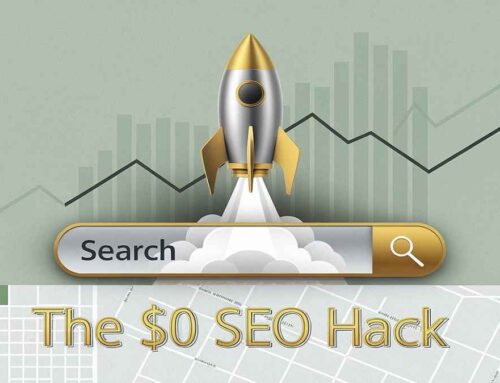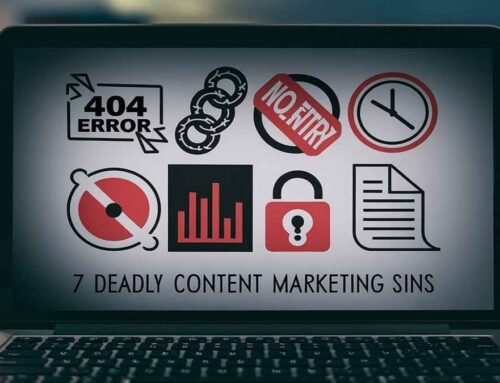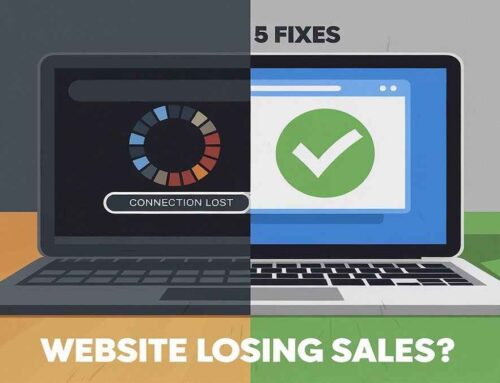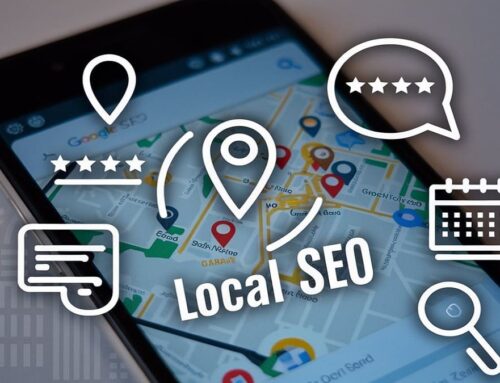
Harnessing Social Media
In today’s digital age, social media isn’t just a platform for personal connections, it’s become an essential tool for businesses to grow, expand and thrive.
Whether you’re a startup or an established enterprise in the USA, harnessing social media can be the game-changer you’ve been looking for to boost business growth. But how can you effectively use social media to your advantage? That’s exactly what we’re going to explore in this blog post.
The Power of Social Media for Business Growth
If you’ve been hesitant about leveraging social media, let me ask you: what’s holding you back? Social media isn’t just about cat videos and influencer selfies; it’s a powerful business tool.
With over 5.22 billion social media users worldwide and rising, the potential to connect with new customers and engage existing ones has never been greater. From Facebook and Instagram to LinkedIn and TikTok, these platforms offer endless opportunities to reach your target audience.
But why does social media matter so much for business growth in the USA? The answer lies in the fundamental shift of how consumers behave today. More than ever before, they’re researching products, engaging with brands and making purchase decisions online.
According to a report by Statista, 73% of marketers believe their efforts through social media have been “Somewhat Effective” or “Very Effective” for their business. Imagine the possibilities for your business when you harness this power strategically.
Why Social Media Strategy Matters
We’ve all seen the “Viral Sensation” stories. A business posts something quirky, funny or insightful and suddenly, their sales and customer engagement soar.
But these are rare exceptions, not the rule. To truly leverage social media for business growth, it’s crucial to have a plan in place. Think of your social media strategy as a roadmap guiding your business toward success.
A solid strategy enables you to:
- Engage with your audience authentically
- Build brand awareness
- Drive traffic to your website
- Generate leads and convert them into customers
- Foster customer loyalty
Without a strategy, your social media efforts may feel random, disconnected and, ultimately, ineffective. So, what’s the best approach? Let’s break it down.
Step 1: Define Your Goals and Objectives
Before diving into creating content or selecting platforms, it’s important to understand your objectives. What do you want to achieve by harnessing social media for your business growth? Your goals could include:
- Increasing brand awareness: Reaching a wider audience and getting your name out there.
- Boosting sales: Using social media as a direct channel for sales or as a lead generator.
- Building customer loyalty: Engaging with your current customers to increase retention.
- Driving traffic: Sending followers to your website for conversions.
Each goal will have its own set of strategies. For instance, if your aim is to increase sales, you might want to focus on Instagram Shopping or Facebook Marketplace. If it’s brand awareness, you’ll focus on creating shareable, engaging content.
Step 2: Choose the Right Platforms
With so many social media platforms available, choosing the right one for your business can feel overwhelming. The platforms you select should align with your target audience and the nature of your business. Here’s a quick breakdown of some of the most popular platforms and their best uses for business growth:
- Facebook: Great for businesses looking to build community and share content across diverse formats, including photos, videos and blogs. Facebook is especially effective for B2C businesses targeting a broad demographic.
- Instagram: Perfect for businesses with visually appealing products or services. Instagram’s engagement rate is high, especially in industries like fashion, beauty, food and travel.
- LinkedIn: Best for B2B companies. LinkedIn allows businesses to build their professional network, share industry insights and engage with potential business clients.
- X (Formerly Twitter): Ideal for brands with a quick news cycle or businesses that want to participate in trending conversations and directly interact with customers.
- TikTok: Known for short, engaging video content, TikTok is a great choice for younger audiences and businesses that want to show their personality through creative videos.
You don’t need to be everywhere, focus on the platforms where your audience spends the most time.
Step 3: Content is King
Once you’ve selected your platforms, it’s time to create content. This is where your creativity comes into play. The content you post should reflect your business’s voice, values and goals while also speaking to your target audience. But what kind of content works?
- Educational Posts: Help your audience solve problems or gain knowledge relevant to your business. This can include how-to guides, infographics or tips.
- Behind-the-Scenes Content: Show the human side of your business. Share photos or videos of your team, your workspace or the process behind your products.
- User-Generated Content: Encourage your customers to share their experiences with your products or services. You can repost their content (with permission), which not only boosts credibility but also strengthens your community.
- Promotional Posts: Don’t shy away from sales-driven content, but ensure you strike the right balance. No one likes to feel like they’re being sold to all the time.
Content should be varied, mix it up with photos, videos, stories, polls and live sessions. The key is to keep your content fresh and engaging to maintain your audience’s attention.
Step 4: Engage, Don’t Just Broadcast
Many businesses make the mistake of treating social media like a one-way street, posting content but not engaging with their audience. Social media is about conversations, not just broadcasting your message.
When customers comment on your posts, ask questions or share their opinions, make sure to respond! Engagement doesn’t just strengthen your relationship with existing followers, but it also increases your visibility by showing your audience that you care.
This can lead to:
- Increased trust
- Stronger customer loyalty
- Higher chances of customer referrals
Step 5: Use Paid Advertising to Scale
While organic growth through social media is possible, paid advertising can significantly accelerate your results. Platforms like Facebook and Instagram offer highly targeted advertising options that allow you to reach your ideal customers based on demographics, interests, behaviors and more.
By investing in paid ads, you can:
- Increase brand awareness
- Target specific customer segments
- Boost website traffic
- Drive conversions
The beauty of social media ads is their scalability. You can start with a small budget and scale up as you see positive results.
Step 6: Measure and Analyze Your Results
If you’re not measuring your performance, you’re flying blind. Social media platforms provide valuable insights into how your content is performing. Use these metrics to refine your strategy and improve your approach. Key metrics to track include:
- Engagement rate: Likes, shares and comments on your posts.
- Click-through rate (CTR): How many people clicked on a link you shared.
- Conversion rate: The percentage of social media visitors who take the desired action, such as making a purchase.
- Follower growth: How fast your audience is growing over time.
By continually analyzing your results, you’ll be able to see what works, what doesn’t and where you need to improve.
Step 7: Stay Consistent and Adaptable
Consistency is key when it comes to social media. Your audience should know what to expect from your brand on a regular basis. But, consistency doesn’t mean rigidity. Be adaptable to new trends and changes in your industry or on the platforms themselves.
Social media is constantly evolving, with new tools, features and trends popping up all the time. Stay on top of these changes and adapt your strategy as necessary. Being flexible will allow your business to stay relevant and competitive in an ever-changing digital landscape.
Conclusion: Harnessing Social Media for Long-Term Business Growth
As we’ve explored, social media is a potent tool for driving business growth in the USA. But to truly harness social media, you need a strategy that aligns with your goals, your audience and your brand’s voice.
By choosing the right platforms, creating engaging content, fostering interactions and tracking your progress, you’ll be well on your way to growing your business in today’s digital-first world.
Social media is no longer optional, it’s essential for business growth. The sooner you start, the sooner you’ll reap the rewards. So, are you ready to harness social media to propel your business forward? The opportunities are endless when you approach social media with the right mindset and strategy.
Q&A
1. Why is harnessing social media important for business growth?
Harnessing social media is crucial because it provides a direct and cost-effective way to connect with a large audience. With billions of active users on platforms like Facebook, Instagram and LinkedIn, businesses have the opportunity to increase brand visibility, engage with potential customers and drive sales.
By leveraging social media effectively, businesses can build trust, boost customer loyalty and generate leads, all of which are key to long-term growth.
2. How can I choose the right social media platform for my business?
The right platform for your business depends on your target audience and business type. For example, if you’re in a B2B sector, LinkedIn might be the best fit, whereas visually-driven businesses like fashion or food may find greater success on Instagram or Pinterest.
Consider where your ideal customers spend the most time and which platforms allow you to create the type of content that best showcases your products or services.
3. What type of content should I post on social media to boost business growth?
To boost business growth, your content should be varied and engaging. This can include:
- Educational content: How-to guides or industry tips that provide value to your audience.
- Behind-the-scenes posts: Show the human side of your business.
- User-generated content: Repost your customers’ content to build credibility and community.
- Promotional posts: Strategically share sales or discounts without overwhelming your audience with constant selling.
The key is to create content that resonates with your audience while staying true to your brand’s voice.
4. How can social media advertising help my business grow faster?
Paid social media advertising allows you to reach a highly targeted audience, which can accelerate your business growth. Platforms like Facebook and Instagram offer precise targeting based on demographics, interests, behaviors and more.
With paid ads, you can boost brand awareness, drive website traffic and increase conversions. The beauty of social media advertising is that it’s scalable, start with a small budget and scale up as you see positive results.
5. How can I measure the success of my social media strategy?
Measuring the success of your social media strategy involves tracking key performance indicators (KPIs) such as:
- Engagement rate: The number of likes, shares and comments on your posts.
- Click-through rate (CTR): How many people clicked on your links.
- Conversion rate: The percentage of social media visitors who completed a desired action, like making a purchase.
- Follower growth: The rate at which your follower count is increasing over time.














